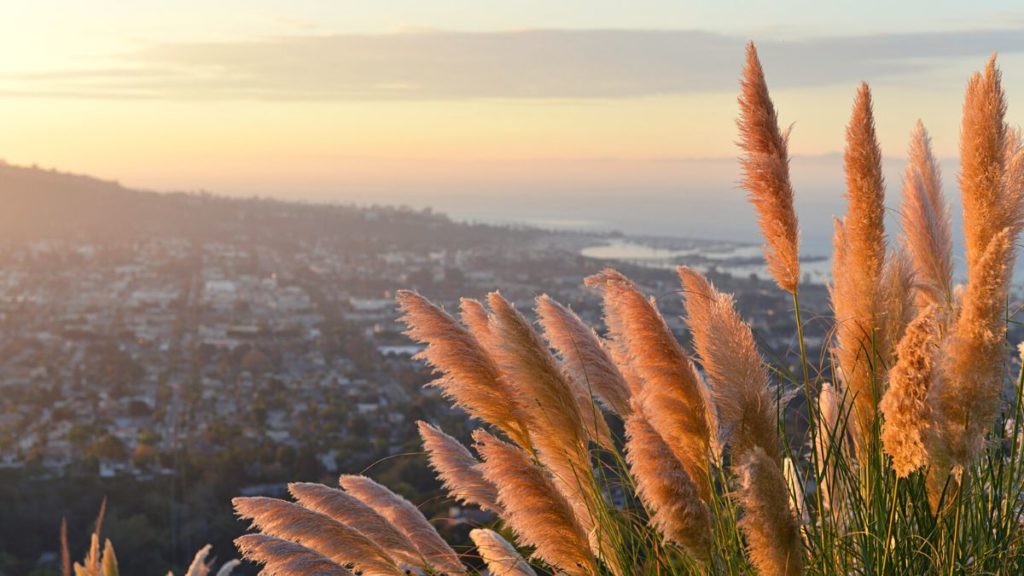
Native grasses do grow in the Mountains and Basins of North America.
Many of our native grasses cover much of the continent while others are quite regional and even localized. No matter, these natives play a role in the environments and habitats around you. Like all natives, they are tough, many are drought tolerant, all offer food and shelter for birds and other wildlife.
As is the case with all your plantings, do you home work. Look at zone hardiness and height. What effects are you looking for? Do you want a sweep or restoration work? Maybe a single clump as an accent but either way, going native will do the trick.
Here is a peak sample at some locals.
Andropagon gerardii (Big bluestem, turkey foot)
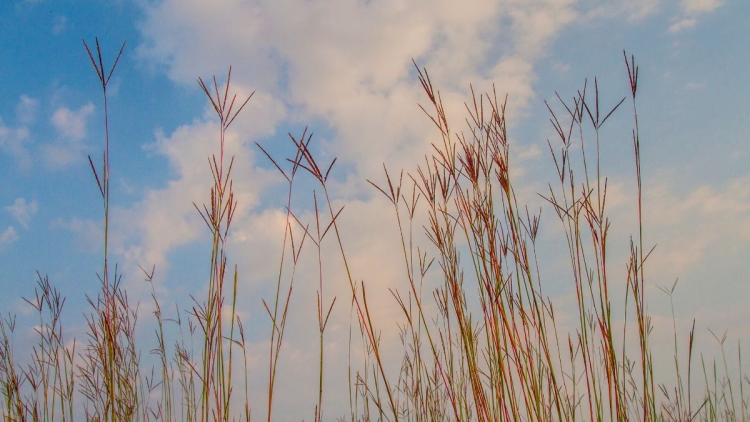
Grows on moist and dry soils, in prairies, basins and open woods throughout much of the United States and Canada. This species is referred to as the monarch of the prairie grasses.
- The tallest of the North American genus, it grows 5 to 8 feet (1.5-2.4 m) tall. Upright and stately the blue-green summer foliage turns to a rich orange and copper-red in autumn.
- Three-parted and vaguely resembling an upside-down turkey foot the inflorescences appear in late summer.
- The main appeal is the lush summer foliage and fall and winter color.
- As an accent or a sweep, it can be quite a dramatic plant and a must for your wildlife gardens.
- Adapted to a wide range of soil and moisture conditions, will grow shorter with less moisture.
- Hardy to Zone 3.
Andropogon hallii (Hall’s bluestem, sand bluestem)
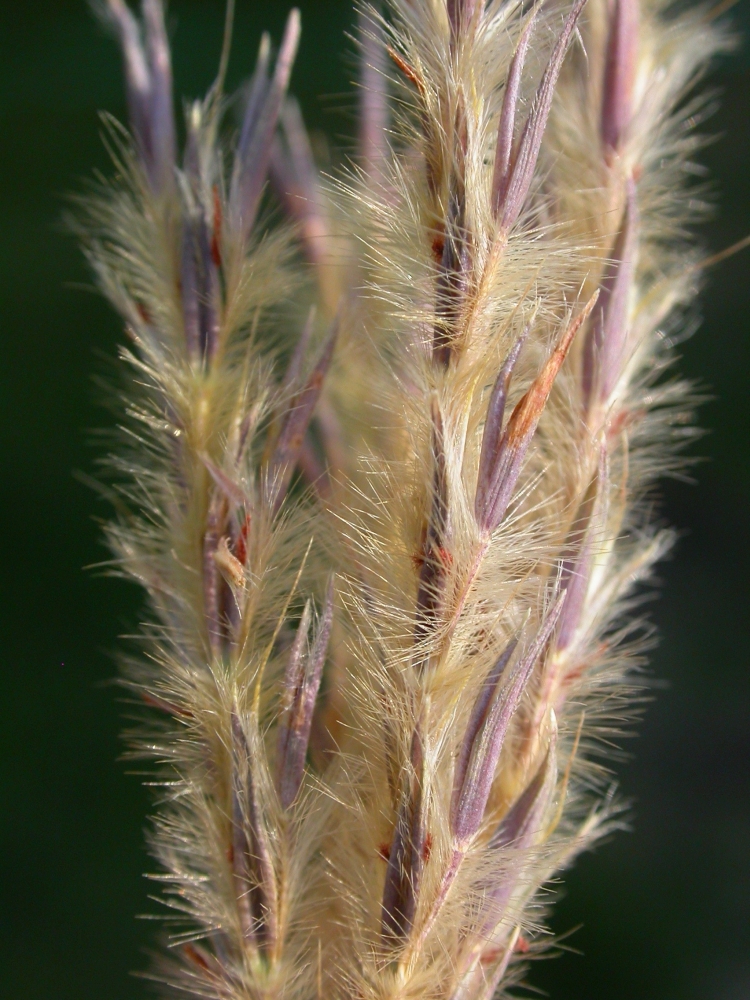
Native to sand hills and dry plains and basins from Montana to Utah, Southeast to Texas, this species looks much like ‘Big bluestem’ except the foliage is a chalky-blue.
- It is also more drought tolerant and a bit shorter, growing 5 to 6 feet (!.5-2 m) tall.
- Little known in gardens, but deserves more attention.
- There are a couple of cultivars to look at ‘Champ’ and ‘Silver Sunrise” are stunning additions.
- Hardy to Zone 3.
Bouteloua curtipendula (Side-oat grama)
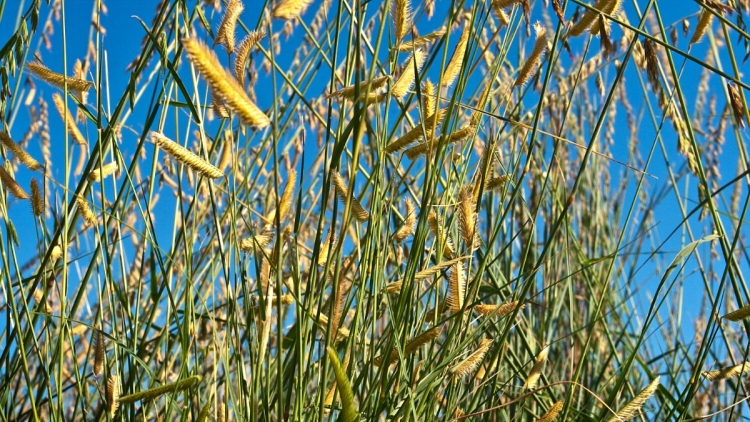
A grass native from eastern Canada to California and south to Argentina.
- The common name refers to the oat like spikelets, which are help mostly to one side.
- A mound of gray-green foliage blooms in June and July to a height of 3 feet (1 m) tall, and are purplish when they first appear.
- A fine addition to the meadow garden or restoration.
- Hardy to Zone 4.
Bouteloua gracilis (Blue grama, mosquito grass)
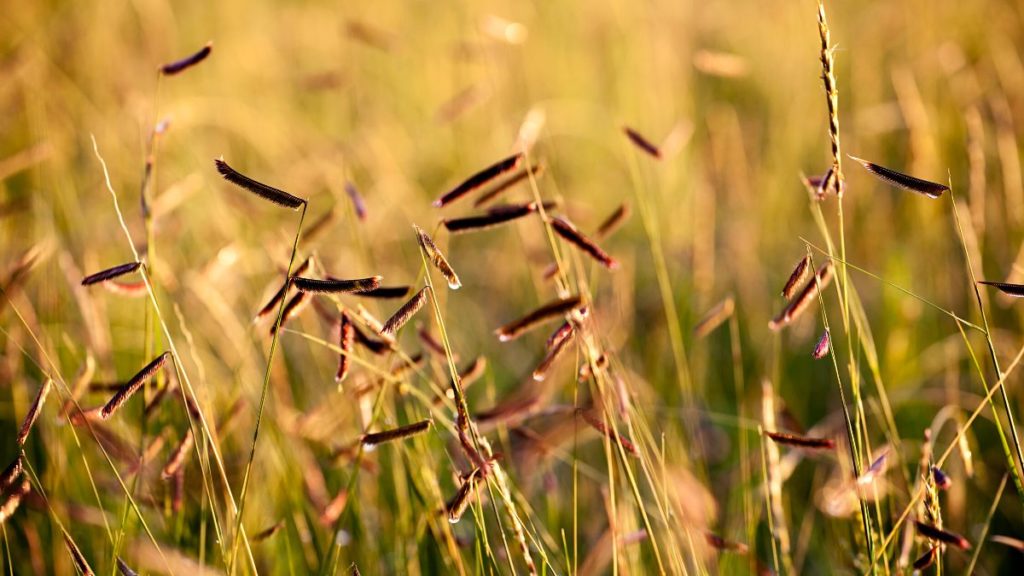
Found mostly on dry plains from Wisconsin and Manitoba west to California and to southern Texas.
- A short grass that usually reaches 8 to 15 inches (20-38 cm) tall as it blooms from June to September.
- Strongly red tinted bleaching to straw color as the season wears on.
- Plant in pots or along borders to really appreciate this plant.
- Dense plantings can be mowed and used as a lawn.
- Hardy to Zone 3.
Elymus canadensis (Canada wild rye)
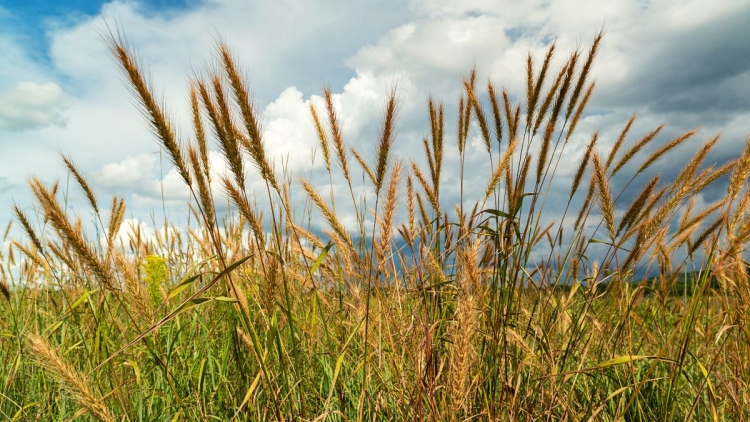
Native along riverbanks, prairies, basins and open grounds and often in dry sandy soil over much of the United States and Canada.
- Clump-forming grass, growing 3 to 6 feet (1-2 m) tall, flowering in mid to late summer.
- The flower and seed heads are reminiscent to cultivated rye.
- Attractive long into winter, it provides valuable food for wildlife and winter protection.
- Can be short lived, but reseeds and makes a great plant for restoration.
- Hardy to Zone 3.
Elymus glaucus (Blue wild rye)
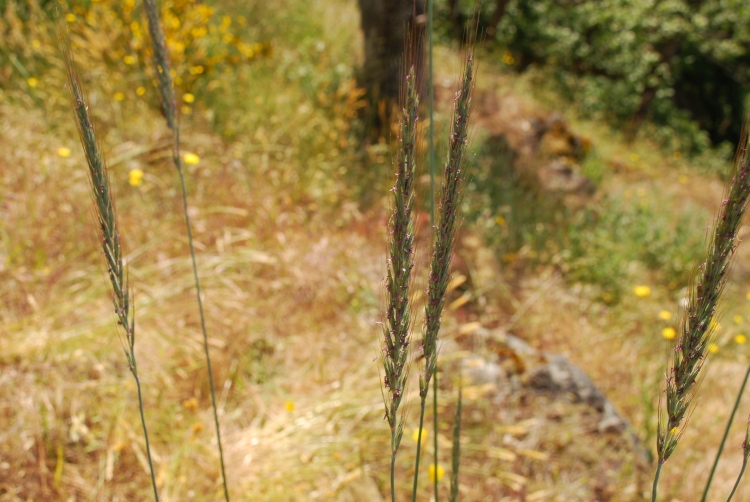
Native to most open thickets across northern North America.
- Clump forming and densely tufted. Leaves are a glaucous blue-green.
- Minor for ornamental value, but great for restoration and filling in areas.
- Hardy to Zone 5.
Festuca californica (California fescue)

Native to dry open ground, chaparral, thickets and open woodlands to 5,000 in elevation in Oregon and in California west of the Sierra Nevada, occasionally on serpentine soils.
- Often found on north facing slopes.
- A beautiful medium sized grass of glaucous blue-green to blue-gray.
- A loose mound that grows 2 to3 feet (60-90 cm) tall.
- Flowers in April though June, This cool weather grower is often evergreen in milder climates
- A great specimen plant or in mass.
- Fairly drought tolerant, but does best with some moisture.
- Hardy to Zone 7.
Festuca idahoensis (Idaho fescue, blue bunchgrass)
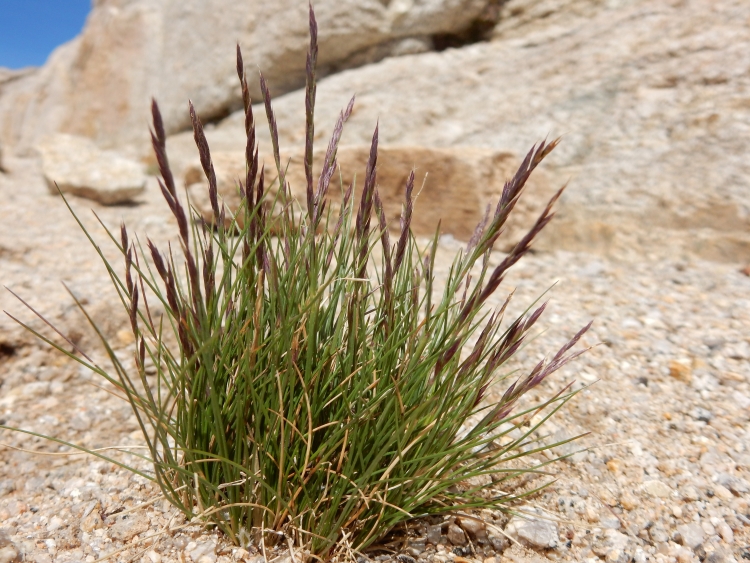
Despite the name, this native grows in open woods and rocky slopes.
- Found growing in British Columbia to Alberta, south to Central California and Colorado.
- A cool season clumping grass that grows to only 14 inches (35 cm) tall.
- More tolerant to wet winters.
- Hardy to Zone 5.
Koeleria macrantha (June grass)
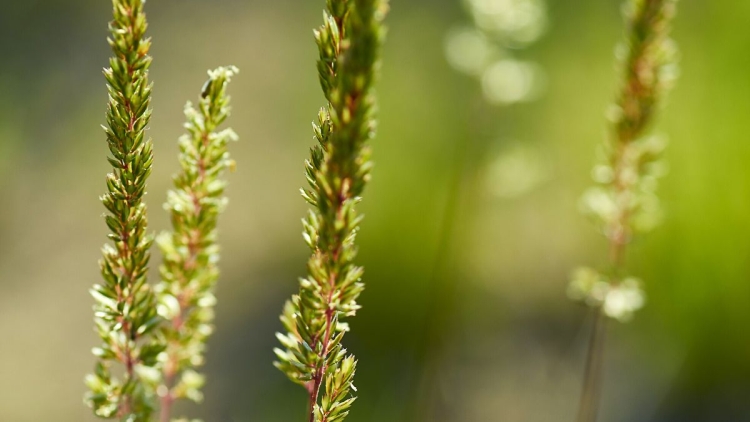
Native to prairies and open woods over much of western central and northern United States and into Canada.
- Grows 2 foot (60 cm) tall in bloom in June.
- Foliage is a bright green.
- Hardy to Zone 4.
Leymus cinereus (Gray wild rye, basin wild rye)
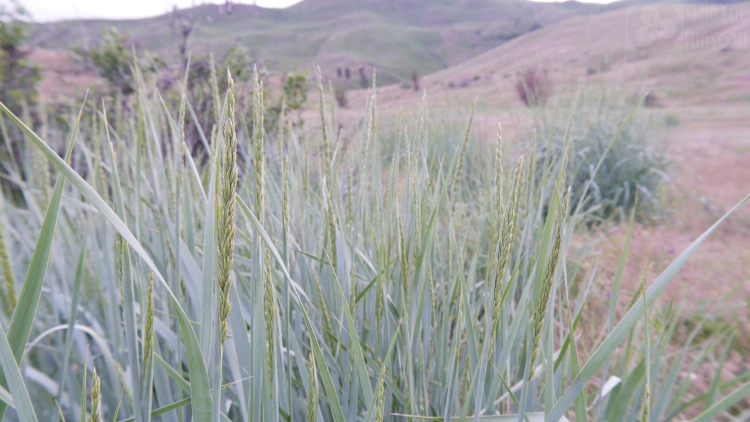
Native to meadows, canyons, streamsides, sage scrub and open woodlands From Minnesota to British Columbia, south to Colorado, Nevada and California, typically in higher elevations.
- Stems and foliage are a gray-green grows 6 to 8 feet (2-2.4 m) tall in bloom.
- Clump forming mostly evergreen in milder climates.
- Excellent in large drifts or sweeps.
- Prefers full sun and low humidity.
- Hardy to Zone 6.
Panicum virgatum (Common switchgrass)

Native to prairies and open fields from eastern Canada through most of the United States except the west coast.
- One of the major components of the great American tall-grass prairie. diverse in size, growing 4 to 8 feet (1.2-2.4 m)tall. It always forms recognizable clumps.
- You will find this growing in basins and meadows throughout the regions.
- Prefers full sun where it grows erect, but will handle partial to light shade where it tends to be more lax.
- Depending on the cultivar, summer foliage can be green , powder-blue and some with streaks of red.
- A warm weather grass with open airy blooms. some are pink or purple with many cultivars being second to none when it comes to ornamental appearance.
- “Dallas blues” grows to 7 feet and has beautiful purple flower heads.
- “Shenandoah” grows to 4 feet and as the season wears on, the blades turn a bright red to almost purple.
- “Prairie fire” is very similar but a bit taller.
- “Cloud nine” is a glaucous blue-green, growing to 8 feet.
- With Panicums, you can’t go wrong and there is a size just right for your garden.
- Panicums are very drought tolerant, erect (even in the winter if the snow isn’t to deep), produces seed for birds and wildlife.
- Various cultivars (and there are many) offer color as well.
- These warm season growers will add to your habitats.
- Another must for any wildlife habitat.
- Check for Zone hardiness as it vary from Zone 3 to Zone 6 depending on the cultivar.
Schizachyrium scoparium (Little bluestem)

Another native to prairies, dry fields, basins and open woods of North America.
- A valuable forage grass, yet attractive in landscapes.
- Grows to 4 feet (1.2 m ) tall. Foliage can vary from bright green to glaucous blue turning to a copper-orange in autumn.
- Blooms in late summer and requires full sun.
- Hardy to zone 3.
Sorghastrum nutens (Indian grass)

The second most prevalent species in the once vast North American tall-grass prairie. A warm weather grower, blooming in late summer. Widely distributed in the prairies on dry slopes and open woods from Quebec, the Great Lakes and the Great Plains of North America. This grass will grow at the foothills and basins of the eastern Rocky Mountains.
- North American Indians would weave lodges, baskets and other items from this all important plant.
- Sorghastrum grows to 7 feet, shorter in drier regions. Highly ornamental, as the foliage turns from green or glaucous to fall colors of yellow, orange, copper and red.
- Easy to grow on a wide range of soils.
- Grows best in full sun, drought tolerant, but does best with some moisture.
- As with many native grasses, Sorghastrum provides food and shelter for native wildlife and makes a spectacular display in large sweeps.
- Hardy to zone 4.
Sporobolus airoides (Alkali sacaton, alkali dropseed)

Native to valleys and meadows throughout the region, stretching from South Dakota to Texas to Washington and to southern California. Reaches into southern Canada as well.
- Clump forming with gray-green leaves grows 5 feet (1.5 m) tall in bloom.
- Foliage turns yellow in fall and light tan in winter.
- Deep rooted and drought tolerant, this grass is easy to grow in just about any kind of soil
- Hardy to Zone 5.
This is your list of native grasses you can use in gardens, landscapes, restoration projects and many other uses. There are more grasses, but some have little or no ornamental value.. Natives grasses have much to offer with little effort involved on your part.
Check with local garden centers, native growers and your state for more ideas and information. Never take from nature unless you have permission from the land owner. Your state or province will have a list of native and you can check on-line for companies that go native.
Ecosystems are fragile, and need now need our help.
